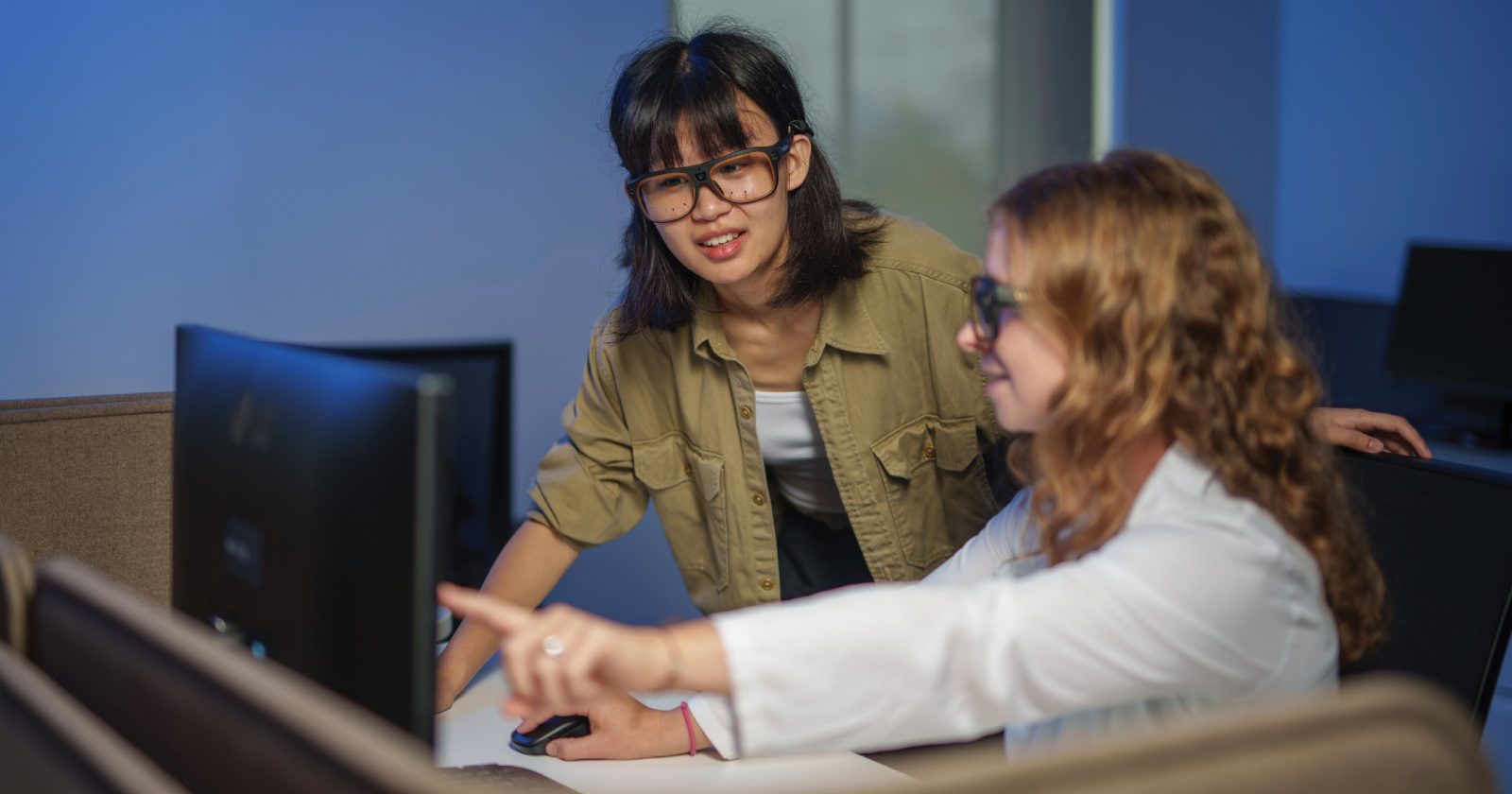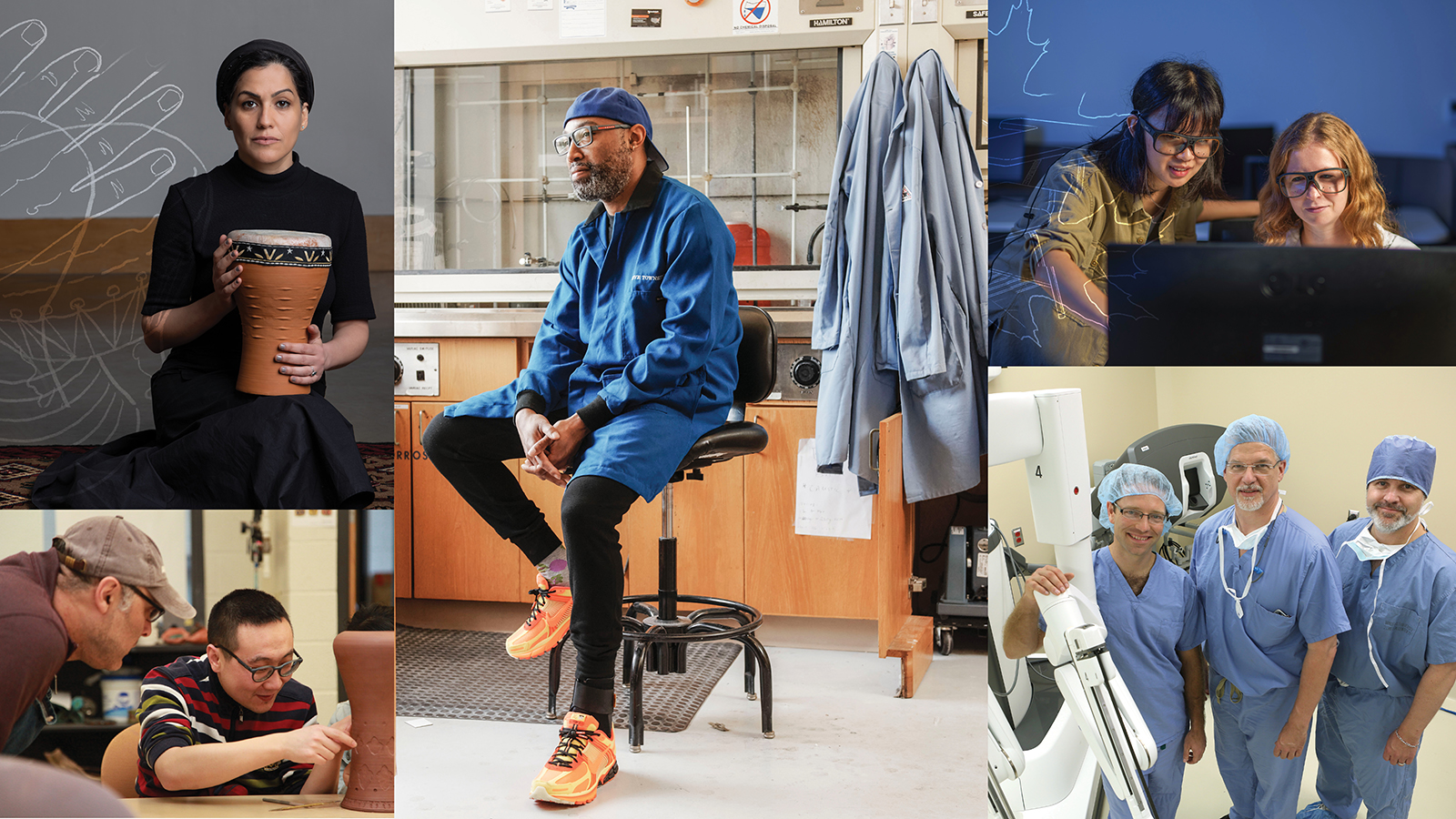By Michael Blanding
It’s said that two heads are better than one—but what about three, or four, or 12? In today’s world, collaboration is essential in solving problems, bridging the gaps between science, engineering, medicine and the humanities. By prioritizing cross-disciplinary collaborations, Vanderbilt walks the walk—not only across departments—but across schools and cultures.
It’s not unusual for a faculty member to knock unannounced on the door of a colleague they’ve never met, following up on an idea or a recommendation, and for that encounter to lead to a grant, paper or long-term project. The best collaborations come from the most unexpected places, leading to new ways of seeing the world and discoveries to help humanity. The following four examples represent some of the best partnerships at Vanderbilt to heal the body, teach the mind and nurture the soul.
MILK OF WONDER
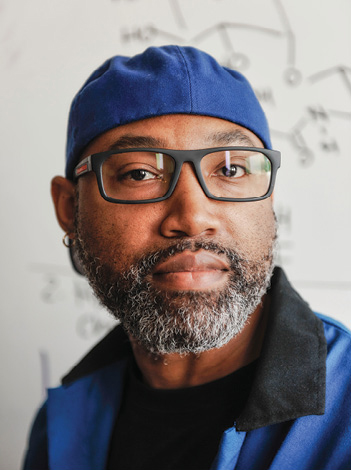
When organic chemist Steven Townsend’s wife was pregnant, she was studying at Columbia University, and he took her for lunch one day in nearby Harlem. With the impending birth on their minds, they couldn’t help but notice a massive billboard for infant formula brand Similac. Walking around wealthier neighborhoods, however, Townsend saw no such advertisements. “The message is clear: We’re supporting breastfeeding for the wealthy, but in poor areas we’re promoting formula,” says Townsend, PhD’10, who started wondering how different formula is chemically from breast milk, and whether it could be supplemented to make it healthier.
“I learned there was something at Vanderbilt called the Pre3 Initiative (Preventing Adverse Pregnancy Outcomes & Prematurity),” says Townsend, Stevenson Professor of Chemistry. “I went there with the naïve idea to get some breast milk, and no one told us we were crazy.” The inquiry led to a collaboration between Townsend and medical faculty, including microbiologist Jennifer Gaddy, associate professor of medicine at Vanderbilt School of Medicine, which has made major breakthroughs in helping to understand just what makes breast milk so good for babies—and why it is so hard to replicate through formula. “We had our first paper within nine months—and that was 74 papers ago,” Townsend says. “As a chemist, I can make a ton of stuff, but I need biologists who can test it and sociologists who can tell me if this is something the public cares about.”
“We have an environment where collaboration is so expected and comfortable, strangers will walk into each other’s offices and pick up a project—I can’t name three other places where that happens.”—Steven Townsend
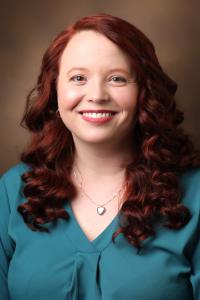
Townsend grew up in Detroit with a single mom, who bought him a chemistry set to keep him out of trouble. As an undergrad at Oakland University 20 years ago, he learned to artificially synthesize pharmaceuticals and other organic compounds. “It’s like a giant sudoku puzzle in real life,” he says. In investigating breast milk, he and Gaddy have focused on complex sugars known as human milk oligosaccharides (HMOs); more than 200 HMOs are found in human milk, and they are incredibly difficult to recreate in the lab. In experiments with mice, the researchers have determined that these sugars help bolster the immune system. They can even kill virulent bacteria such as group B strep—in part by preventing bacteria from forming protective biofilm so that they are more susceptible to attack by the immune system.
WATCH: Quantum Potential: The Unexpected Healing Power of Human Breast Milk
While it is unlikely that every sugar can be produced at large enough scale to supplement formula, the research has bolstered the case for the unique qualities of breast milk, and Townsend has been exploring ways to add synthetic sugars to pasteurized donor milk for mothers who are unable to breastfeed. The research has led to other surprising applications, as well, including using HMOs to potentially treat gut infections—and even using them in paint for Navy warships to prevent buildup of ocean biofilm. As for Townsend, the emphasis on collaboration at Vanderbilt kept him here when an Ivy League university tried to recruit him a few years ago. “Just 10 days ago, a pediatrician came in with an idea, and now we are working on a project together,” he says. “We have an environment where collaboration is so expected and comfortable, strangers will walk into each other’s offices and pick up a project—I can’t name three other places where that happens.”
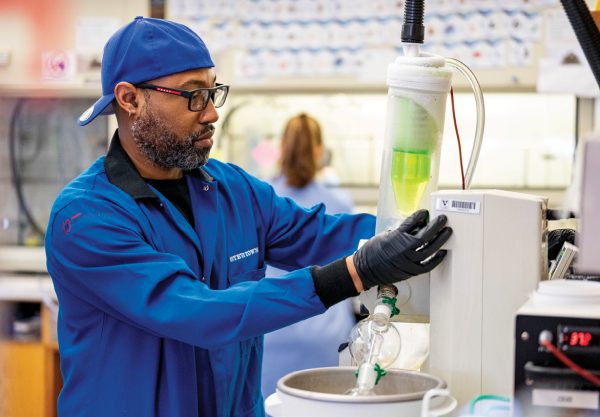
SURGERY WITH FLEXIBLE NEEDLES
The state-of-the-art treatment for enlarged prostate is something called HoLEP (Holmium laser enucleation procedure), a technique in which a tiny laser burns out prostate tissue that blocks a person from urinating. “There’s no debate that this is the way it should be done,” says Robert Webster, Richard A. Schroeder Professor of Mechanical Engineering. “And yet, we only do it 1 percent of the time.” That’s because it’s difficult to insert a rigid endoscope through the urethra and angle it in such a way to remove all of the tissue.
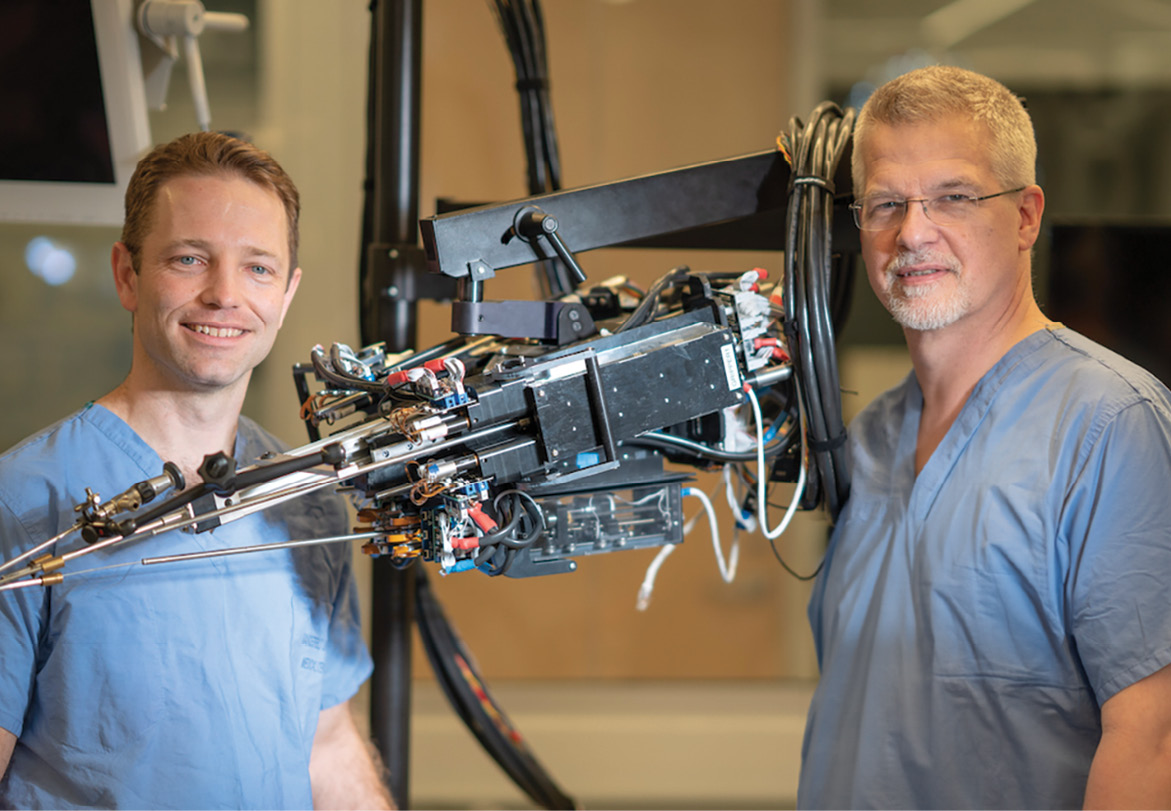
Webster is looking to change that with the invention of a robotic “steerable needle” that can be maneuvered like a tentacle, enabling the laser to get into the most difficult places. He has been developing the tech with the help of Duke Herrell, professor of urology at Vanderbilt School of Medicine, and former Vanderbilt engineering student Richard Hendrick, PhD’17. Together they created Virtuoso Surgical, a startup company that will start clinical trials for the device this fall. “We think this company can completely transform many aspects of medicine,” Webster says. “There are many places in the body where surgeons can put endoscopes, but can’t do the procedures they want because it is constrained by the tissue around it.”
The technology uses a series of telescoping tubes, resembling an old-school TV antenna, made of flexible metal alloy called nitinol and bent in such a way that extending and turning them can give doctors fine-tuned control. He developed the procedure at Johns Hopkins University before coming to Vanderbilt, but he didn’t know what the best application would be until he walked into the lab of Herrell, who also directs the minimally invasive urologic surgery/robotics program. Herrell suggested HoLEP as a perfect first task for the technology and helped Webster and Hendrick adapt prototypes for use by surgeons. Eventually Herrell took a sabbatical to raise money for the new company, which has so far raised $18 million. “Let me tell you, it’s a lot stronger to have a surgeon talking to potential investors,” Webster says.
Also aiding the team in setting up the company was attorney Mark Pickrell, adjunct professor at Vanderbilt Law, who has helped navigate legal documents and regulatory hoops. “I might have expected a collaboration with surgeons, but I didn’t expect to be working really closely with lawyers,” Webster says. If successful, the devices could be used for other minimally invasive procedures in areas including the bladder, nasal passages and brain, and for treating tumors and other disorders without requiring costly and potentially dangerous open surgery. “We know it will save lives.”
SOUNDS OF COMMUNITY
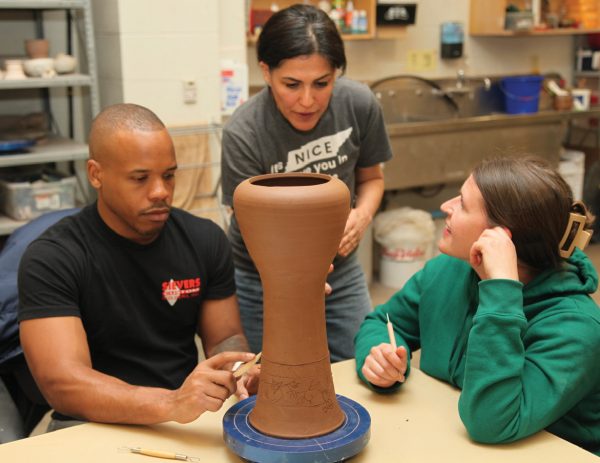
When Raheleh Filsoofi was growing up during the Iranian revolution, she was forced to spend much of her time inside because it wasn’t safe to go out. “I developed this kind of aural experience of the world, rather than visual,” she says. “For the first four years of my life, I experienced the world mostly through sounds.” She remembers sounds of conflict and people marching in the streets, but also those of people playing music and reciting poetry. Now an assistant professor of ceramics at Vanderbilt, Filsoofi wanted to pay homage to the power of sound to create a sense of place in a project she calls The Resonance of the Lands. Filsoofi partnered with her husband, Reza Filsoofi, a classical Iranian musician, as well as immigrant and refugee groups throughout Nashville in using clay to create Middle Eastern instruments, including darbukas and other drums, which were then played by local musicians.
“I started collecting soil from different states in the U.S. since 2016,” Filsoofi says. “As I’ve traveled, the collection is a mapping of my existence within place.” For this project, it was important to use soil from Nashville—as the “city of music” and the adopted home of immigrant communities who have settled here from countries such as Iraq, Syria, Ukraine and Afghanistan. To obtain the clay, she met with Vanderbilt’s Facilities Department, who allowed her and Reza to source soil from construction sites on the Vanderbilt campus. “They were some of the loveliest people I’ve ever worked with,” she says. “They had to stop construction so we could safely go in and do the documentation and collect the soil, and everyone was so supportive.”
Raheleh created instruments on her potter’s wheel and with a 3D clay printer, while Reza skinned them, along with help from ethnomusicology Assistant Professor of the Practice Isidora Miranda of the Blair School of Music and theatre Assistant Professor Alexandra Sargent Capps, who directs the Wond’ry Fiber Arts Build Lab. The group then held workshops at Vanderbilt in collaboration with the Nashville International Center for Empowerment for immigrant families to work with clay and textiles to help decorate the instruments. “I’ve learned how clay and music bring communities together, and so I was fascinated to put them together,” she says. “We let people decorate without any rules or regulations, which I think created a sense of trust and freedom, showing people that their creativity matters.”
Finally, Filsoofi helped put together an event in which families were invited to hear performances by local professional musicians, as well as share food and stories and participate in a communal drum circle. Filsoofi was overjoyed by the experience. “There’s always a distance between artists and audiences, and we worked to crush that distance,” she says. “There are social divisions within every community—and for a few hours those divisions didn’t exist. This is the world I’ve always imagined, and we made it happen for a night.”
BUILDING THE CLASSROOM OF THE FUTURE
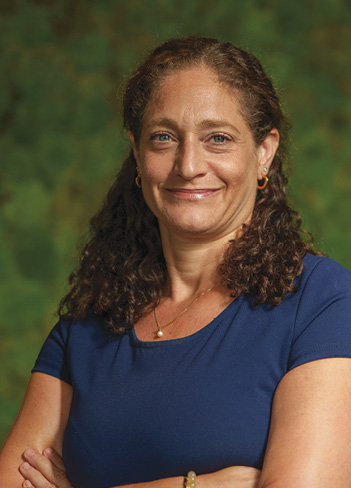
Kids moving around a classroom while oxygen and carbon atoms follow their actions on a screen. A coding program that mixes and matches blocks to make music. Nurses conducting medical procedures in a mixed-reality classroom with AI feedback. These are just some of the learning innovations being created by members of the LIVE Learning Innovation Incubator. The goal, says Director Alyssa Wise, is to “research and develop innovations that leverage technology and AI to make learning more engaging, effective, accessible and equitable.” She adds: “That’s obviously a tall order.” LIVE is doing it by collaborating across the Vanderbilt campus, not only connecting educators from the Peabody College of education and human development with computer scientists from the School of Engineering, but also looping in subject matter experts from across campus.
“We have partners in almost every academic area— history and music, nursing, business—we really touch everywhere,” says Wise, professor of technology and education. The initiative, which launched in 2022, comes out of research showing that students learn best when actively engaged, at the same time recognizing that AI and other advanced technologies are coming to classrooms, ready or not. “AI is potentially a game-changer in the ways that it’s interactive and personalizable,” Wise says. “This is our attempt to get ahead of the curve.” Rather than use technology to funnel more information into students’ heads, LIVE’s researchers explore revolutionary new ways to learn—such as how the Engage AI Institute, funded by a National Science Foundation grant, uses gamified environments to teach concepts.
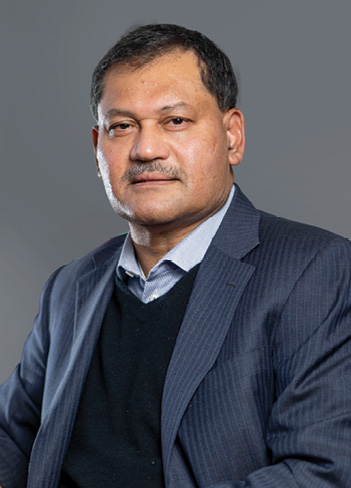
A group of students, for example, might travel to a remote island where a mysterious disease is killing the fish. They would talk with residents and examine records to figure out why. “Instead of a science lesson where the teacher tells you something, you are virtual agents in an environment, solving a mystery as part of an adventure,” says Gautam Biswas, a Cornelius Vanderbilt Professor of Engineering and Computer Science and core faculty member with LIVE. A similar concept drives a lesson on photosynthesis, in the Science through Technology Enhanced Play system, where an overhead camera system tracks students as they play the roles of oxygen, carbon dioxide and water while they figure out how to use sunlight to create sugar—a lesson sure to stick with them more than a formula they read in a textbook.
In the mixed-reality simulation, nursing students working with patient mannequins can replay their responses to a medical situation with AI-supported instructor feedback to go over what they did well and where they can improve. “You’re giving them a more realistic experience, at the same time, not doing it with real patients, where it could be harmful or dangerous,” Biswas says of his collaboration with Dan Levin, professor of psychology and human development, and Mary Ann Jessee, professor and assistant dean for academics in the School of Nursing. Currently involved with more than 25 projects and 200 collaborators across campus, LIVE is expanding into new space in the 17th and Horton Building, where four high-tech labs with specialty equipment will be open to new collaborators interested in pushing the bounds of education. “We want people to use the technologies we have available,” Biswas says. “To solve these complex problems, we need the technology people, we need the learning scientists, we need the subject experts with an understanding their fields, and we need the framework for bringing them all together.”
